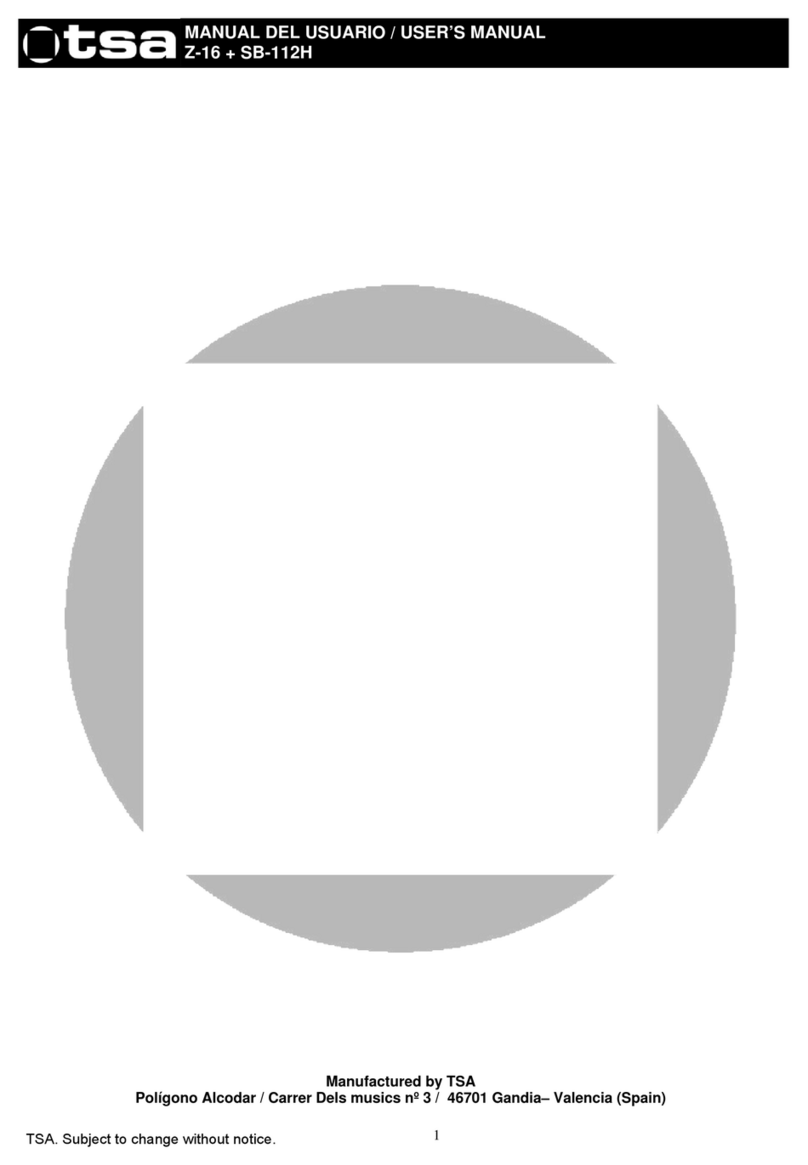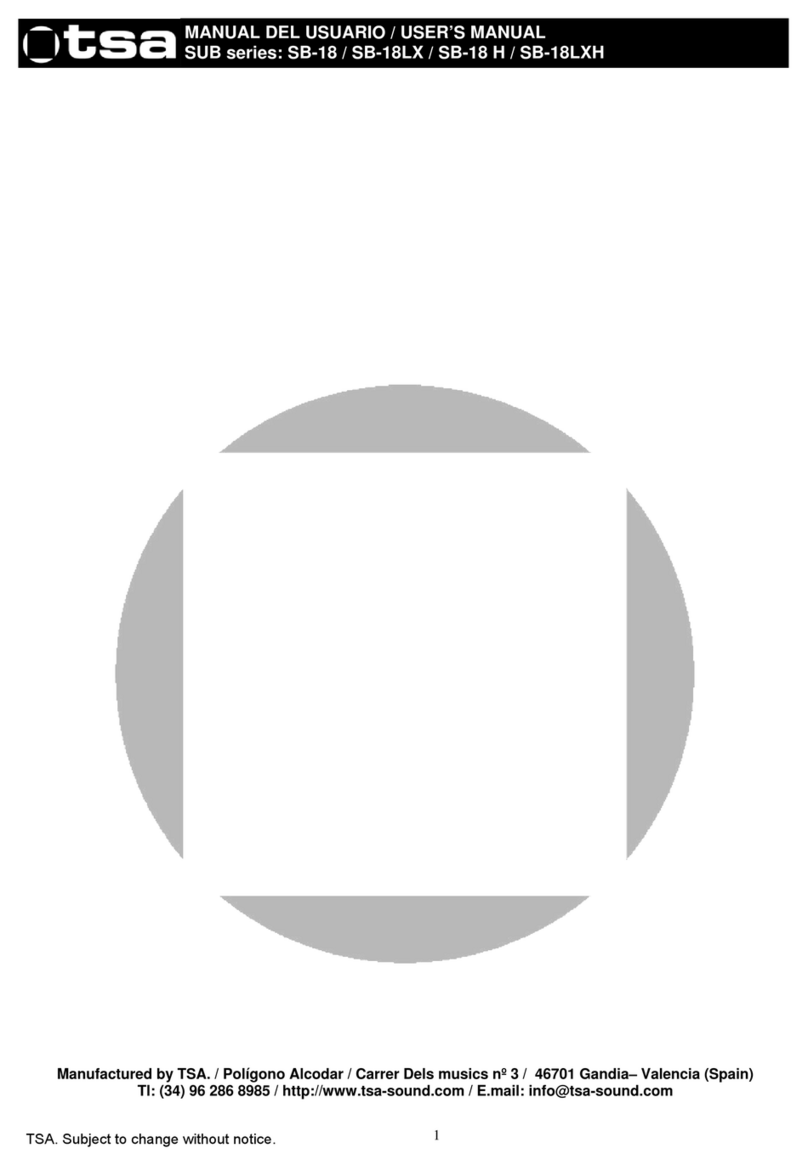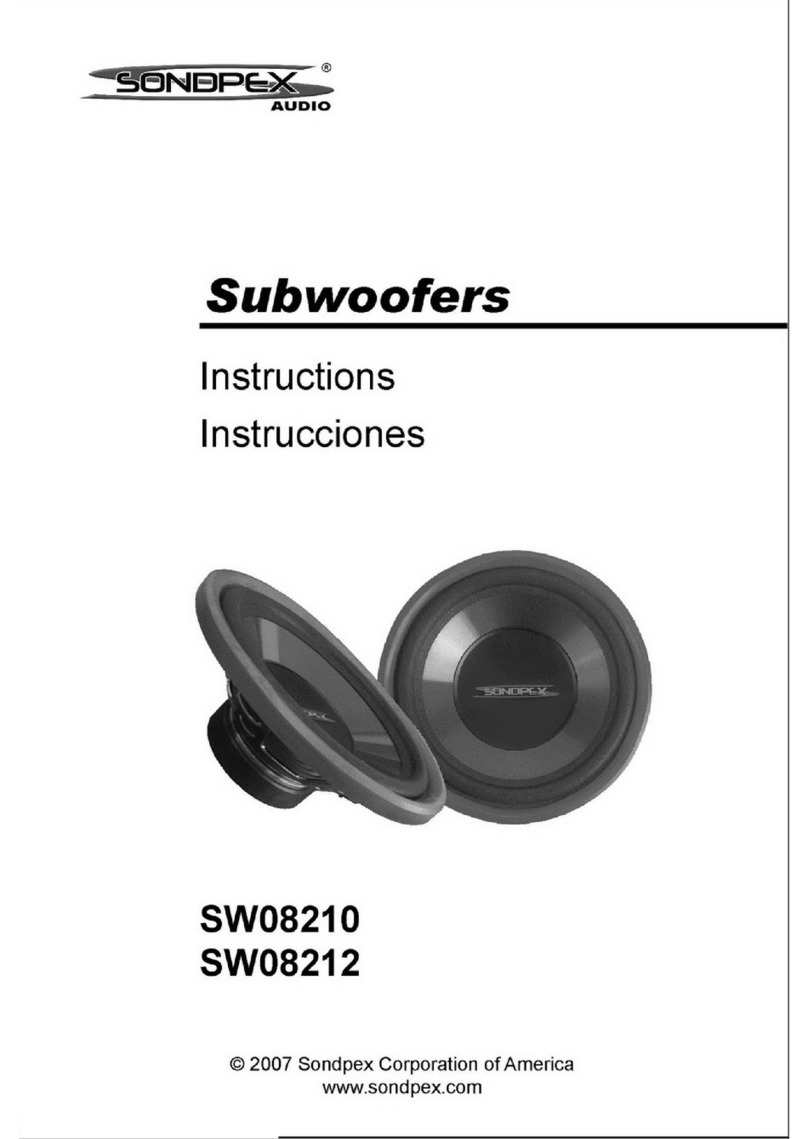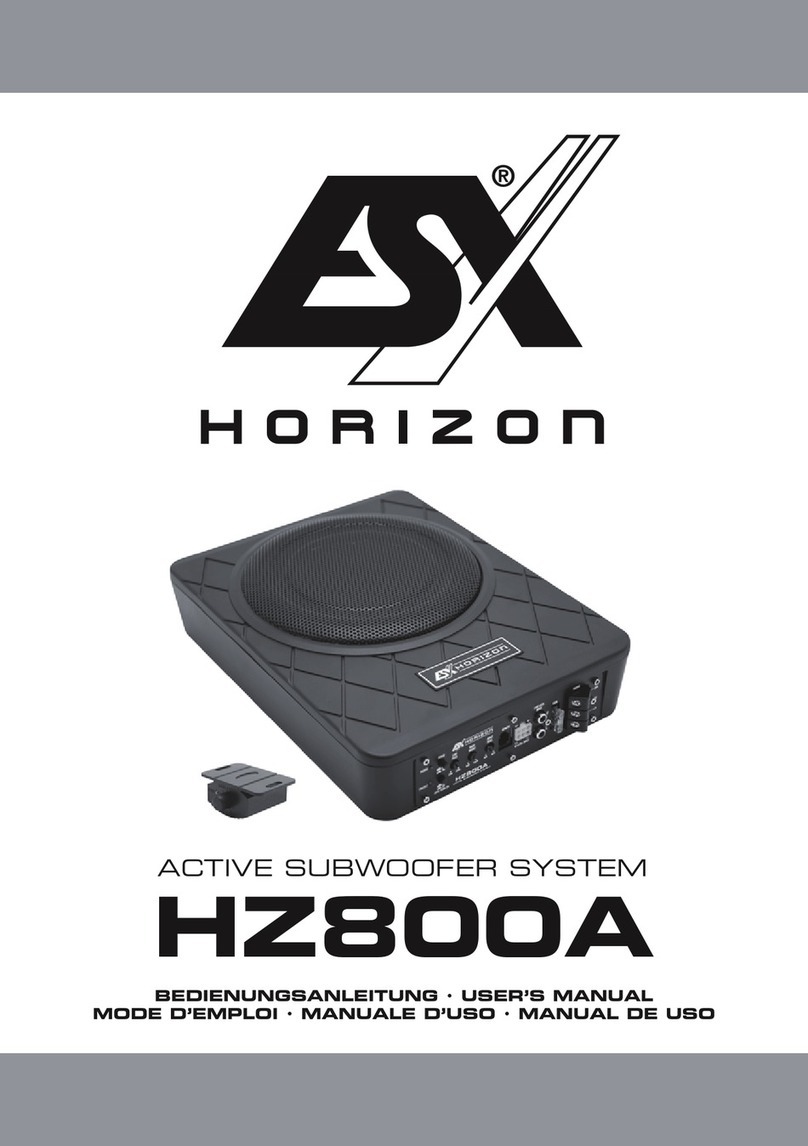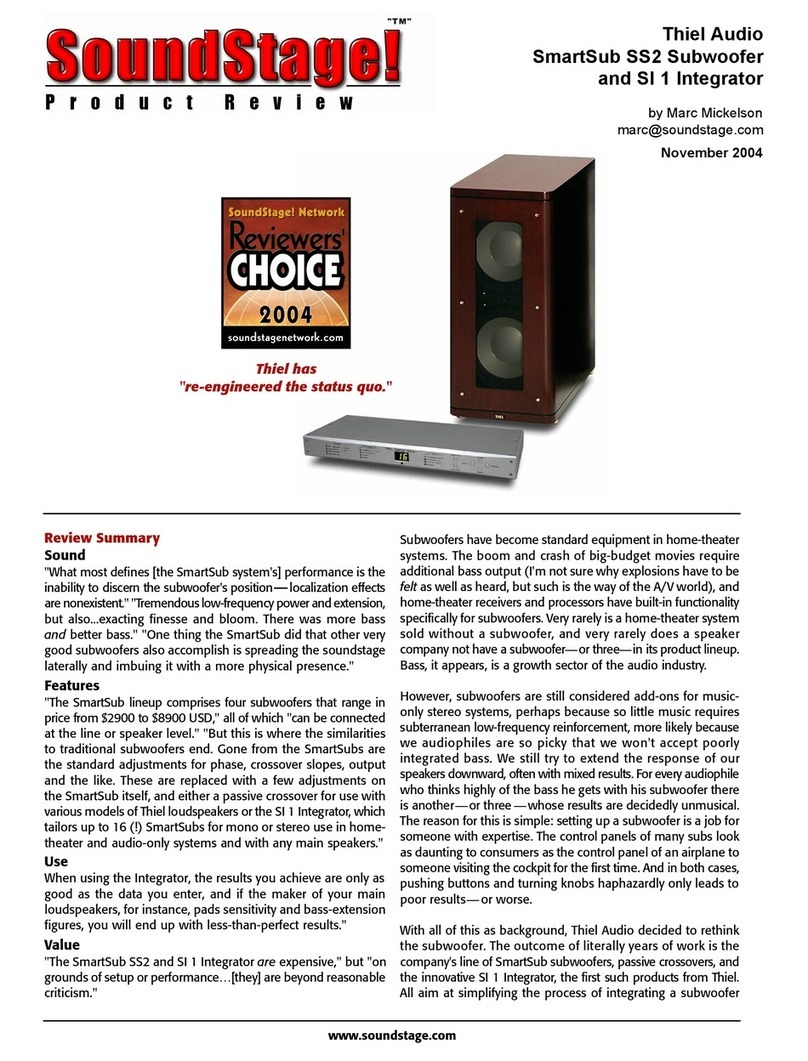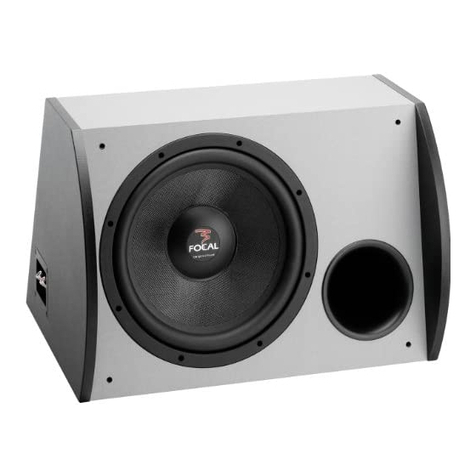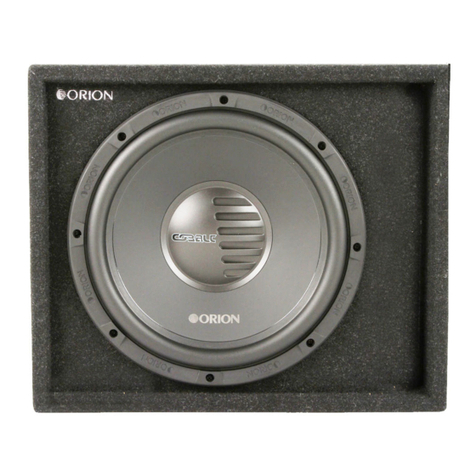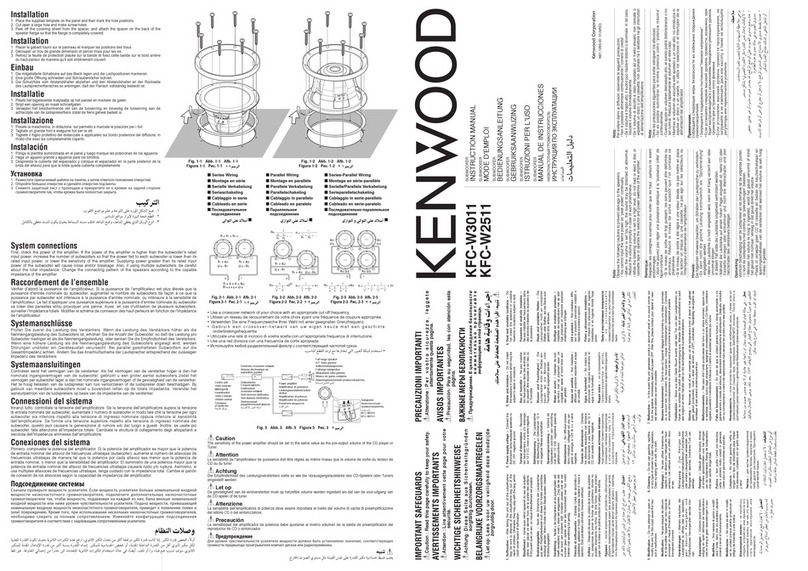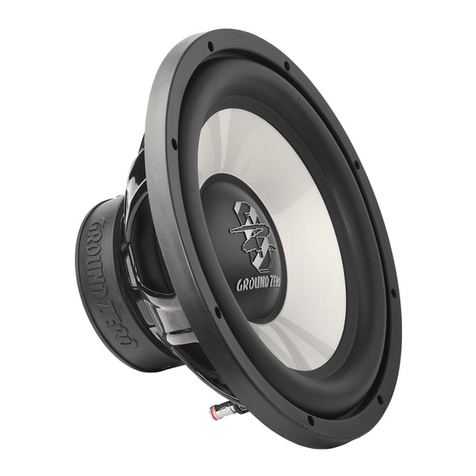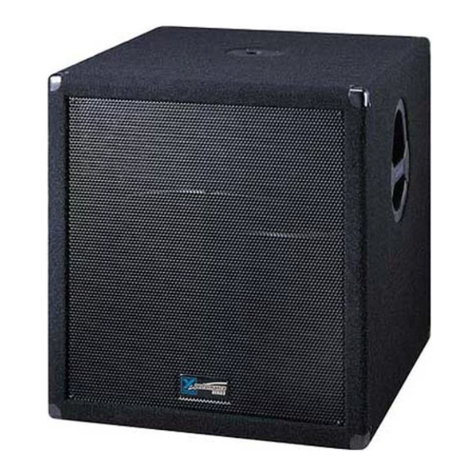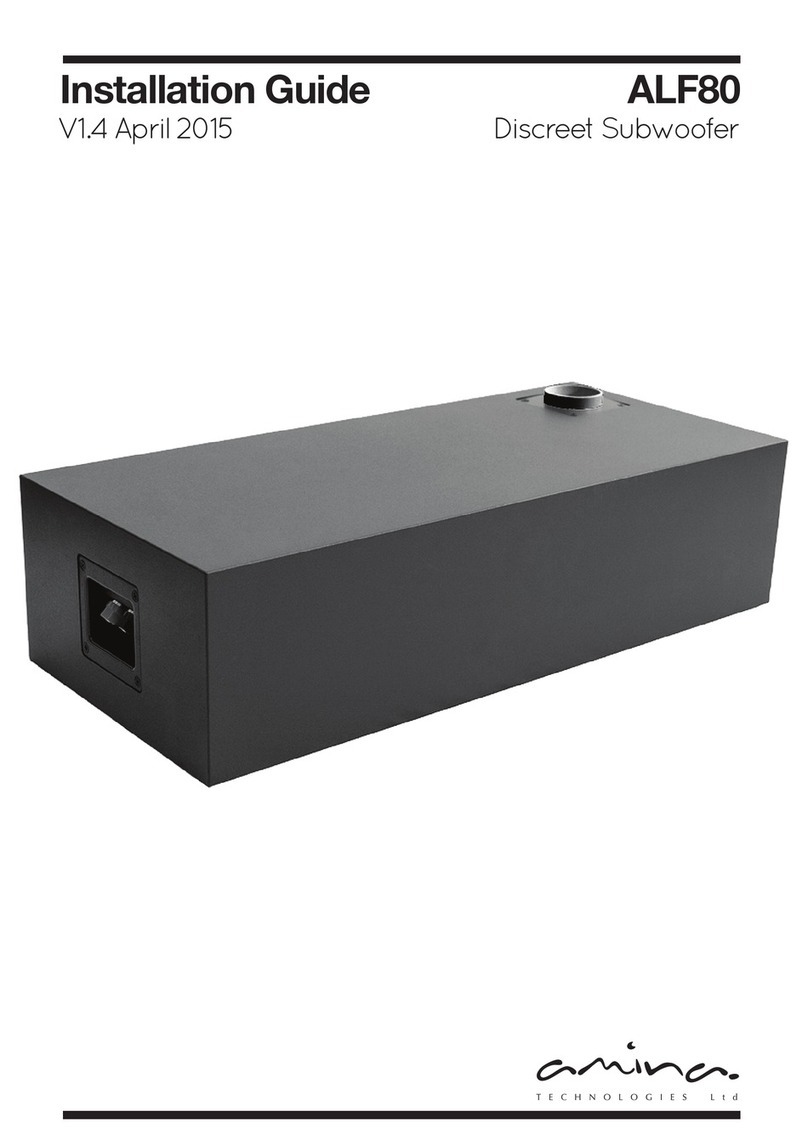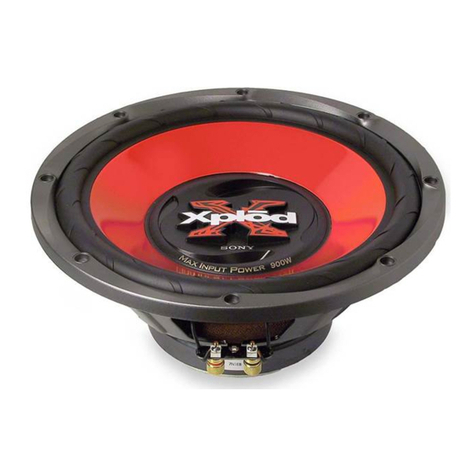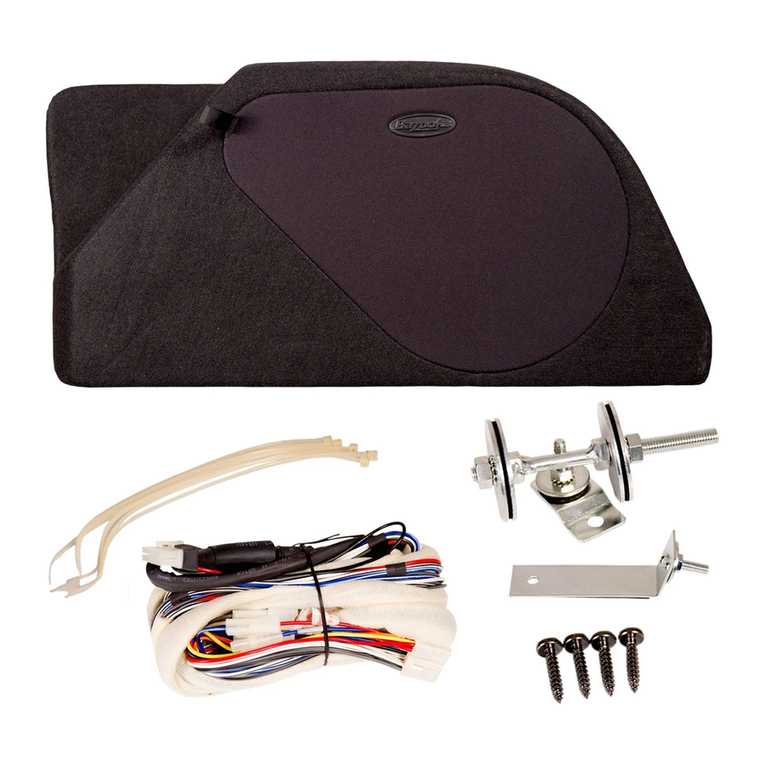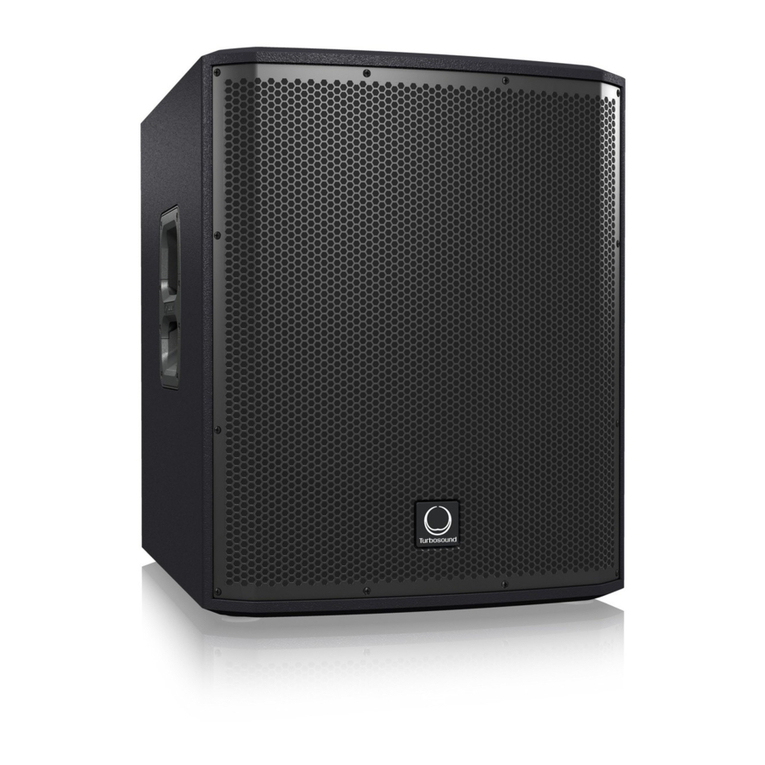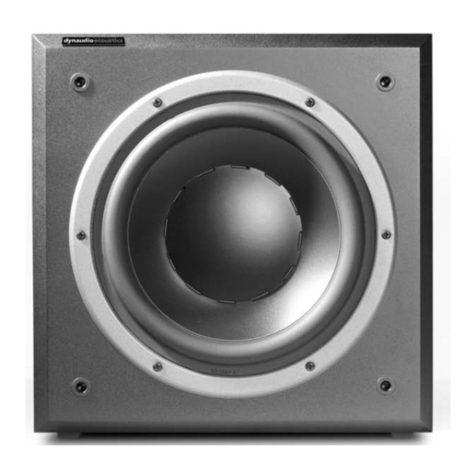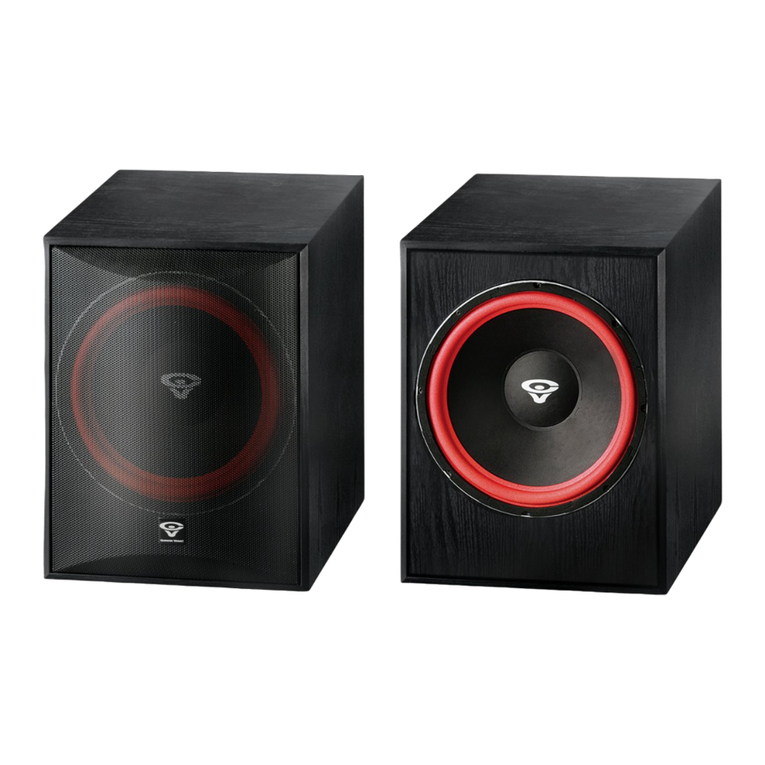TSA Z Series User manual

1
MANUAL DEL USUARIO / USER’S MANUAL
Z series: Z-24
TSA. Subject to change without notice.
Manufactured by TSA. / Polígono Alcodar / Carrer Dels musics nº 3 / 46701Gandia– Valencia (Spain)

2
MANUAL DEL USUARIO / USER’S MANUAL
Z series: Z-24
TSA. Subject to change without notice.
Introducción
Z-24 es el sistema de line array más plano del mercado. Con
directividad variable, la altura de cada unidad es de 13 pulgadas.
El recinto de 2 vías está alimentado por un solo canal de
amplificador (filtro pasivo) y monta dos transductores de
frecuencias medias-graves de 6.5 pulgadas y 4 bocinas
piezoeléctricas de alta frecuencia de 1 pulgada.
Este sistema ofrece una amplia gama de posibilidades para
instalaciones permanentes y móviles, y es una excelente opción
para aplicaciones de refuerzo de sonido medianas y pequeñas.
Las frecuencias bajas se pueden reforzar con el subwoofer SB-
15.
El diseño mecánico del Z-24 permite ángulos verticales entre
unidades de 0 a 10 grados sin el uso de pasadores, lo que
permite un despliegue fácil y rápido por un solo operario. El frame
de volado (HZ-26) utiliza el mismo sistema de montaje que las
unidades Z-24.
Precauciones de Seguridad
El signo de exclamación dentro de un triángulo indica la
existencia de componentes internos cuyo reemplazo
puede afectar a la seguridad. Las especificaciones se
encuentran en la etiqueta de la parte posterior del
producto.
Este símbolo indica que el presente producto no puede
ser tratado como residuo doméstico normal, sino que
debe entregarse en el correspondiente punto de
recogida de equipos eléctricos y electrónicos.
El doble recuadro indica que es un equipo Clase II.
No exponga este equipo a lluvia o humedad.
No emplace altavoces en proximidad a equipos
sensibles a campos magnéticos, tales como monitores
de televisión o material magnético de almacenamiento
de datos.
Garantía
Todos nuestros productos están garantizados por un periodo de
24 meses desde la fecha de compra. Las garantías sólo serán
válidas si son por un defecto de fabricación y en ningún caso por
un uso incorrecto del producto. La reparación en garantía cubre
la reposición de las partes defectuosas. Otros cargos como
portes y seguros, son a cargo del comprador en todos los casos.
Para solicitar reparación en garantía es imprescindible que el
producto no haya sido previamente manipulado e incluir una
fotocopia de la factura de compra.
Conexiones
Estos modelos utilizan dos conectores Neutrik Speakon NL4,
específicos para altavoces y permiten una conexión profesional.
Para enchufar un cable a una caja, inserte el conector macho en
cualquiera de las entradas de la caja y gire el conector macho
hacia la derecha, momento en el que
quedará bloqueado. Los dos conectores
están en paralelo (todos los pines), de forma
que cualquiera de ellos puede usarse
indistintamente como entrada o salida.
.
Introduction
Z-24 is the most plane line array system on the market.
With variable directivity, the height of each unit is 13
inch. The 2-way speaker cabinet is powered by one
single amplifier channel (HF crossover network) and
mounts two 6.5 inch low-mid frequency transducers
and 4-1 inch high frequency piezoelectric horns.
This cabinet offers a wide range of possibilities for
permanent and mobile installations and is an excellent
choice for medium and small sound reinforcement
applications. Low frequencies can be reinforced with
the SB-15 subwoofer.
The mechanical design of the Z-24 enables vertical
angles between units of 0 to 10 degrees without use of
flying pins allowing easy and quickly deployment for
just one operator. The rigging frame (HZ-26) uses the
same rigging system as the cabinets.
Safety Precautions
The exclamation point inside an equilateral triangle
indicates the existence of internal components whose
substitution may affect safety. The specifications can
be found on the rear label of the product.
This symbol on the product indicates that this product
should not be treated as household waste.
Instead it shall be handed over to the applicable
collection point for the recycling of electrical and
electronic equipment. The double square indicates
Class II device. Do not expose to rain or moisture.
Do not place loudspeakers in proximity to devices
sensitive to magnetic fields such as television monitors
or data storage magnetic material.
Warranty
All products are warranted against any manufacturing
defect for a period of 2 years from date of purchase.
The warranty ex-cludes damage from incorrect or
misuse use of the product. All warranty repairs must
be exclusively undertaken by the factory or any of its
authorized service centres. To claim a warranty repair,
do not open or intend to repair the product.
Return the damaged unit, at shippers risk and freight
prepaid, to the nearest service centre with a copy of the
purchase invoice.
Connections
The units comprise two Neutrik Speakon model NL4
connectors, designed specifically for loudspeakers, are
used to ensure both professional and safe connection.
To plug a cable into a unit, insert the male plug into any
of the enclosure's sockets and turn the male plug to the
right so that it is locked. The two
connectors are in parallel (all
pins) so that either one of them
can be used for input or output.
Manufactured by TSA. / Polígono Alcodar / Carrer Dels musics nº 3 / 46701 Gandia– Valencia (Spain)

3
MANUAL DEL USUARIO / USER’S MANUAL
Z series: Z-24
TSA. Subject to change without notice.
Ficha Técnica / Data sheet
Connections
+
-
+
-
NL4 PARALLEL
Pin +1
Pin - 1
Pin +2
Pin - 2
X-Over
HF
LF
IN
Dimensions
15 cm.
43,9 cm.
36,4 cm.
Front. Lateral.
Zenithal.
Technical data Z-24
Usable bandwidth (-10dB) 80 - 20.000Hz
Maximum SPL (*) 132 dB (preset)
Coverage angle (-6 dB). Horizontal: 90°
Vertical Coverage: Depends of the array elements and curvature
Transducers LF: 2 x 6,5’’ LF woofer
Transducers HF: 4 x 1’’ HF unit
Nominal impedance: 4/16 Ω
AES power handling: 400 W
Connectors: 2 x NL4
Rigging components: 4-point rigging system
Permissible flight load: 12 units
Inter-enclosure angles (degrees): 0 / 0.25 / 2.5 / 5 / 10
Physical data
W x H x D: 440 x 364 x 150 mm.
Weight (net): 14 kg.
Cabinet: First grade Baltic birch plywood
Side panels: Steel rigging hardware
Finish: High resistance rough black paint
Front Steel grill: Steel grid with anti-corrosion coating and foam
Rigging components: High grade steel with anti-corrosion coating
(*) Peak level at 1 m under free field conditions using 10 dB crest factor pink noise with specified preset.

4
MANUAL DEL USUARIO / USER’S MANUAL
Z series: Z-24
TSA. Subject to change without notice.
Sistema de volado
El clúster puede ser montado por un solo operario de
manera fácil: El sistema utiliza una fijación variable entre 0º
y 10º, para determinar el ángulo entre unidades. La pieza
de volado monta el mismo mecanismo de regulación que
todas unidades.
El modo de montaje es el siguiente:
1º Se apoya la caja sobre el suelo en posición vertical (Ver
imagen 1).
2º Se sujeta con la mano derecha la pieza de volado para
montarla en la parte superior de la caja. (Ver imagen 2).
3º Se inserta la pieza de volado en la hendidura superior del
herraje de la caja, inclinando la parte trasera de la pieza de
volado de 10 grados y deslizando la pieza hacia adelante
hasta que haga tope, (Ver imagen 3).
4º Se inclina hacia abajo la parte trasera de la pieza de
volado, hasta hacer coincidir los taladros, de este modo,
configuramos el ángulo que deseemos aplicar y por último,
con la mano izquierda, se procede a insertar el pasador en
el taladro adecuado, (Ver imagen 4).
5º Una vez instaladas las dos piezas de volado,
procedemos a volar la primera caja, repitiendo la misma
operación para cada una de las unidades conformarán el
sistema de Array, (Ver dibujo 5).
Flying system used
The cluster can easily be rigged by a single operator:
The system uses a variable setting between 0° and 10°
to determine the angle between units. The flying
system hardware has the same regulating mechanism
as the rest of the units.
Rigging instructions:
1. Place the loudspeaker on the floor in the upright
position (See Figure 1).
2. Hold the flying system hardware in your right hand
ready to insert it into the top of the loudspeaker. (See
Figure 2).
3 The flying system hardware is inserted into the top
groove of the loudspeaker by tilting down the back end
of the hardware 10 degrees and sliding the piece
forward until it stops (See Figure 3).
4. Push the back end of the flying system hardware
down until it aligns with the holes. In this way we set
the angle we want. Finally, with the left hand, insert the
pin into the proper hole, (See Figure 4).
5. Once the two flying system hardware pieces are
installed, we repeat the same operation for each of the
units that make up the array system (See figure 5).
1 2
3 4
Hardware flown Slinging
flown
123
Pin 1
Pin 2
50 mm
tube
5

5
MANUAL DEL USUARIO / USER’S MANUAL
Z series: Z-24
TSA. Subject to change without notice.
Ensamblaje y volado de las cajas.
1º Una vez instalada la primera caja con la pieza de volado
ensamblada, se introducen las hendiduras de la parte
superior de la segunda caja en el saliente de la parte
inferior de la primera.
2º Inclinamos la parte inferior de la segunda caja 10 grados
y deslizándola hacia dentro hasta que haga tope.
3º Al soltar la caja, por su propio peso se balanceara hasta
la posición de 0º, en donde existe un dispositivo de
seguridad que la sujetará, de este modo ya podemos soltar
la caja.
4º Con la mano izquierda balanceamos la caja, para
configurar el ángulo que deseemos aplicar y por último, con
la mano derecha, procedemos a insertar el pasador, (Ver
imagen 4).
Ajuste del ángulo entre cajas.
Estas cajas, incorporan unos mecanismos para calibrar el
ángulo de inclinación vertical entre cajas, (Que oscila de 0 a
10 grados) depende donde insertemos el pasador
obtendremos los siguientes ángulos entre unidades: 0º /
1,25º / 2,5º / 5º / y 10º, (Ver dibujo 2).
Sistema soportado sobre una base.
El clúster puede ser montado en posición invertida,
utilizando como apoyo la misma pieza de volado, (Ver
dibujo 1). En este tipo de montaje no se deben ensamblar
mas de dos unidades.
Assembly and flying the loudspeakers.
1. Once the flying system hardware has been fitted to
the first loudspeaker, slot the topside of the second
loudspeaker into the protruding piece on the bottom of
the first loudspeaker.
2. Tilt the bottom of the second loudspeaker 10
degrees and slide inwards until it stops.
3. As you slowly release the loudspeaker, with its own
weight it will swing to the 0° position where a safety
mechanism will lock it in place. You can now safely let
go of the loudspeaker.
4. With the left hand swing the loudspeaker to set the
angle you want. Finally with the right hand, insert the
pin, (See Figure 4).
Adjusting the angle between loudspeakers.
These speakers incorporate mechanisms to calibrate
the vertical angle of inclination between units (ranging
from 0 to 10 degrees). Depending on where we insert
the pin we can obtain the following angles between
units: 0° / 1.25° / 2.5° / 5º / and 10º, (See Figure 2).
Stand mounted system.
The cluster can be mounted upside down, using the
flying system hardware as a support (See Figure 1). A
maximum of two loudspeakers can only be used with
this type of assembly.
1 32

6
MANUAL DEL USUARIO / USER’S MANUAL
Z series: Z-24
TSA. Subject to change without notice.
Processor: 2 IN / 4 OUT
6 units: Z-24 (16 oh.)
400W. AES
800W. PROGRAM
2 units: SB15 (8 oh.)
1000W. AES
2000W. PROGRAM
1500W. / 2 oh
3000 / 4 oh. (Bridge mode)
1500W. / 2 oh
Configuración / Configuration Z-24

7
MANUAL DEL USUARIO / USER’S MANUAL
Z series: Z-24
TSA. Subject to change without notice.
Ubicación
Coloque los altavoces por delante de los micrófonos, si los
utiliza. La realimentación (feedback) o acople ocurre cuando
los micrófonos recogen el sonido que sale de los altavoces y
los introducen de nuevo en el sistema.
La realimentación puede provocar graves daños en su caja.
Si el espacio es limitado, dirija los altavoces hacia donde no
estén los micrófonos, para reducir el acople.
Si usa platos giradiscos, coloque los altavoces lejos de los
platos giradiscos. Si la aguja del plato giradiscos recoge la
señal de los altavoces y la re-amplifica se produce un acople
de las bajas frecuencias. Se recomienda el uso de una base
sólida en el plato giradiscos.
Seguridad
Es importante que los altavoces se utilicen de forma segura.
Los altavoces de estos modelos son capaces de generar
niveles extremadamente altos de sonido y se deberán utilizar
con precaución.
La pérdida auditiva en las personas es acumulativa y puede
originarse en aquellas personas que están expuestas
durante largos períodos a niveles superiores a los 90dB.
Nunca permanezca en las proximidades de altavoces que
generan sonidos a elevados niveles.
Montaje en columna
Asegúrese de que el piso o el escenario son sólidos y están
convenientemente nivelados.
No construya pilas demasiado altas de altavoces en
aplicaciones al aire libre dónde el viento pueda moverlas.
Tenga en cuenta que los altavoces que rinden niveles de
muy alta potencia de sonido pueden moverse o vibrar y
desplazarse.
Sistema de voladura
Las cajas de la serie Z están dotadas de un
sistema de voladura, tal como se indica en
la página nº 4 de este manual. Este sistema
solo permite volar un máximo de 12 cajas
suspendidas una debajo de otras, utilizando
los pasadores de anclaje como indica este
dibujo. Como se puede observar, la pieza
superior de volado, esta diseñada para:
Volar el grupo de unidades suspendido
mediante unas eslingas, o apoyado en un
tubo de 50 mm de diámetro, como indica el
dibujo
Cableado
Al conectar un sistema de altavoces a un amplificador se
recomienda que la resistencia de retorno del cable utilizado
sea menor de una décima parte de la impedancia nominal
del sistema o de los sistemas conectados en paralelo.
Si los cables de conexión tienen poca sección, o son
demasiado largos, aumentará la impedancia del sistema y
obtendremos una caída de tensión, que disminuirá la
potencia que pueda llegar a los altavoces.
Placement
If you are using microphones, place the loudspeakers
in front of them. Feedback occurs when the
microphones pick up the sound coming from the
loudspeakers and send it through the system again.
Feedback can seriously damage your unit. If you only
have limited space, point the loudspeakers to an area
where there are no microphones to reduce feedback.
If you use turntables, place the loudspeakers far away
from the turntables. If the turntable's needle picks up
the signal from the loudspeakers, it re-amplifies it and
low frequency feedback occurs. We recommend that
the turntable has a solid base.
Safety
It is important that the loudspeakers are used safely.
These models of loudspeakers are capable of
producing extremely high sound levels and should be
used with caution.
Hearing loss is cumulative and it can affect people
who are exposed to sound levels higher than 90dB for
long periods of time. Never remain in the vicinity of
loudspeakers that are emitting high levels of sound.
Mounting speakers in columns
Make sure that the floor or stage is strong and has a
level surface.
Do not stack up too many speakers in outdoor
applications where the wind could move them. Please
note that loudspeakers operating at very high sound
levels can move or vibrate and shift from their original
position.
Flying system
Z series speakers are equipped with
flying system hardware as indicated on
page 4 of this manual. Using this system
a maximum of 12 units can be flown, one
below another, using the anchor pins as
shown in this drawing. As can be seen,
the top flying system hardware is
designed to: Fly the suspended group of
units with slings or supported by a 50
mm diameter tube, as shown in the
drawing.
Cabling
When connecting a loudspeaker system to an
amplifier it is recommended that the return resistance
of the cable used is less than one tenth of the nominal
impedance of the system or systems connected in
parallel. If the connection cables have a small cross-
section, or are too long, the system impedance will be
increased and therefore a voltage drop will be
produced, thus reducing the power reaching the
Hardware flown Slinging
flown
123
Pin 1
Pin 2
50 mm
tube
This manual suits for next models
1
Other TSA Subwoofer manuals


